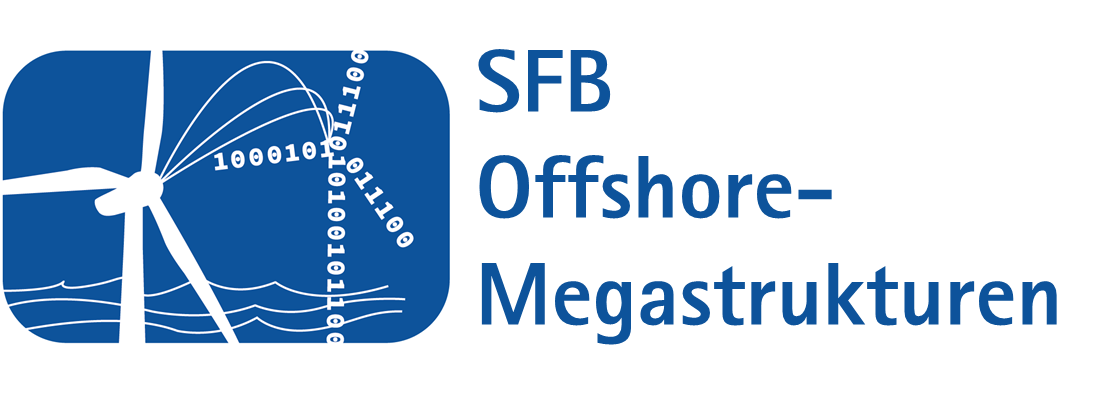The Digital Twin is both core innovation and neuralgic component of the CRC, which establishes a global linkage of all subprojects (SP) directly or indirectly with numerous interfaces. The global goal is to establish the Digital Twin as a real-time capable, reduced overall model of a real offshore wind turbine (OWT) and to adapt it to its long-term behavior at defined sampling times. The concept of the digital twin, to be found. The working hypothesis of this central project is that the virtual, adaptive and real-time image of a megastructure, in this case OWT, taking into account the relevant dynamic interactions, requires numerical computations that can only be enabled by combining several reduced partial models. In this context, fully coupled nonlinear modeling is very time consuming. Complex partial models from numerical solid mechanics and from numerical fluid mechanics do not represent valid options in the foreseeable future as a result of computational capacity requirements, especially since real-time capability is desired. Therefore, the efficiency and robustness of the virtual image should be ensured by applying the reduced partial models arising from the SP.
The concept of deep digitization is a digitization driven by an accurate computational model with near real-time capability, which shall be interpreted as a main requirement. Within this framework, the overarching model is intended to arise from the fundamental laws of mechanics, i.e., the model is neither a metamodel nor a non-physical surrogate model. According to an overarching vision, the structure of a OWT (blades, hub, and nacelle), either the floating support structure anchored by cables (tower and substructure) or the support structure embedded in the seabed, as well as the seabed, wind, and water waves and currents shall be considered as elements of a single coupled overall dynamic system. This model will henceforth be referred to as the Digital Twin and the physical system under consideration, OWT, will accordingly be called the Real Twin. The Digital Twin can be used for the operation of an existing offshore megastructure as well as for the design of a not yet existing offshore megastructure. Therefore, to enable the exchange of information between the twins, an overarching interface is of neuralgic importance. In this context, the temporal evolution of significant structural mechanical parameters describing the behavior of some significant properties (e.g., the degradation of material or structural properties due to non-reversible changes or permanent deformations) will be updated by information acquisition on the Real Twin. This is not only for validation purposes, but also to evaluate and identify properties of the megastructure that describe the actual state of the Real Twin. The aim is to establish a new paradigm in the field of structural design and operational planning of offshore megastructures using an OWT as an example, by creating solid foundations and their systematic implementation as a unified approach. With the help of the novel digital twin, the concept of in-depth digitization is introduced for the first time in the wind energy industry, but is also transferable to other modern highly dynamically loaded megastructures. This will enable the strengths of the modern digitization paradigm and the latest methods in structural mechanics, structural design and operations management to be synergistically brought together. The resulting novel combination will open a new dimen- sion in the field of digitized offshore megastructures.
The SP create complex partial models for individual components of the OWT or impacts on the OWT and have to reduce them accordingly so that they can be combined into a real-time capable reduced overall model. By reducing a complex partial model to a reduced partial model, the calculations are significantly accelerated as well as the requirements for high computational efficiency are met. If measurement data are available, they can be used to fit both the complex partial models and the coupled overall model. In close cooperation with SP B05, the highly efficient implementation of the underlying numerics is addressed, in particular the structure-preserving model reduction in the framework of structural mechanics and algorithms for the efficient solution of the system matrices in saddle point form in the framework of multibody systems (MBS), finite element method (FEM) and structure-preserving time integration. The developed overall model is the Digital Twin, which is to be adapted with innovative methods for robust model fitting within SP C04 at periodic intervals using generic or real measurement data. The overall model with time-dependent parameterization can be used by the SP to improve the complex partial models by more accurately representing stresses and boundary conditions or to adapt them to the long-term behavior of the overall structure.
Most of the SP partners will use the digital twin mainly for the calculation of load cases, e.g. SP A02 (aeroelasticity), SP B02 (new operational concepts for rotor blades) and SP C02 (structural monitoring), but some SP partners will also use it as a development platform for the reduced partial models or for the overall model, e.g. SP B03 (beam material law as a function of cross-sectional deformations) and SP B05 (structure-preserving model reduction). The present central project is assigned to the cluster Coupled Overall System.
Subproject management
30167 Hannover
30167 Hannover
30167 Hannover












